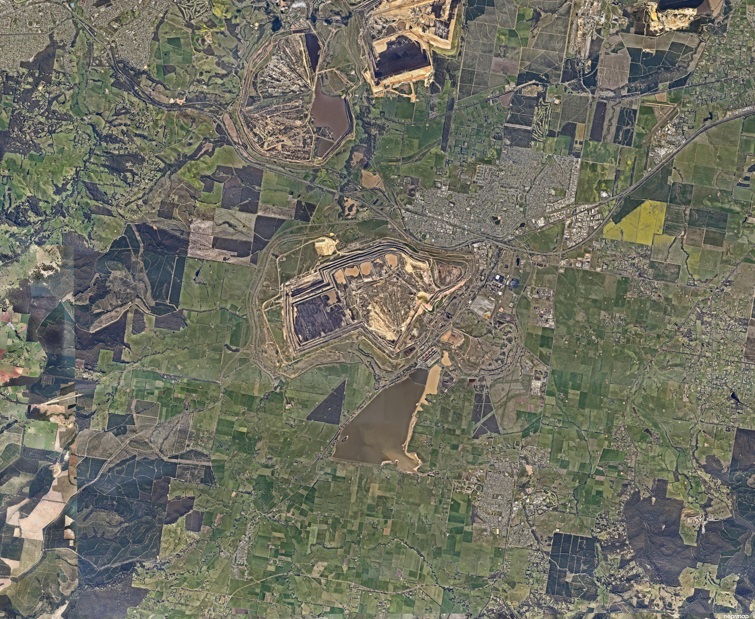Error message title

Error message title
Searching great energy plans for you

Hazelwood Rehabilitation Project – Environment Effects Statement referral process
ENGIE Hazelwood has made referrals under the Environment Effects Act 1978 (Vic) and Environment Protection and Biodiversity Conservation Act 1999 (Cth) for the next stages of works in the Hazelwood Rehabilitation Project. The referrals will be assessed by the Commonwealth and State Ministers, and a decision as to the necessity of an Environment Effects Statement and/or other forms of environmental assessment, once made, will be published. ENGIE Hazelwood will continue to provide updates as to the status and outcomes of the referrals, and opportunities for stakeholder and community input in respect of the proposed works, through a dedicated website.
Environment Effects Statement information
Why is ENGIE making referrals?
An Environment Effects Statement (EES), if required, would allow all elements of the proposed works to be assessed and any issues, uncertainties and risks to be identified and addressed. This will help determine Hazelwood’s proposed final landform.
Importantly, an EES consolidates and carefully reviews all relevant environmental aspects and makes recommendations to inform statutory decision making on a proposed project.
The environmental referrals are made under both the State Environment Effects Act 1978 (Vic) (EE Act) and Commonwealth Environment Protection and Biodiversity Conservation Act 1999 (Cth) (EPBC Act).
What is an EE Act referral?
The EE Act provides that projects that may have significant environmental effects can be referred to the State Minister for Planning for a decision on whether an EES is required. The criteria for referral include whether:
- A project may have potential extensive or major effects on the health or biodiversity of aquatic, estuarine or marine ecosystems, over the long term; or
- A ‘combination’ of potential environmental effects, including effects on land stability, and effects on beneficial uses of waterbodies over the long term due to changes in water quality, stream flows or regional groundwater levels.
What is an EPBC Act referral?
The EPBC Act requires proposed actions that may have a significant impact on any matters of national environmental significance to be referred to the Commonwealth Minister for the Environment for assessment.
Matters of national environmental significance recognised under the EPBC Act include Ramsar-listed wetlands and endangered flora and fauna.
An EPBC Act referral determines whether proposed works will need formal assessment and approval.
A system is in place between the Commonwealth and State Governments, under a bilateral agreement, to utilise the State EES system to assess any matters of national environmental significance. If this approach is adopted, it enables the EE Act and EPBC Act assessments to occur under a single process and saves duplication of assessment work.
When available, ENGIE Hazelwood’s EPBC Referral will be available to view from the Commonwealth Department of Agriculture, Water and the Environment.
Why now?
Rehabilitation works already completed across the Hazelwood site in the period since its operational closure in March 2017 include:
- extensive works to decommission and demolish redundant mining and Power Station infrastructure;
- technical studies to demonstrate the geotechnical, hydrogeological and environmental benefits of the proposed Mine lake landform; and
- stabilising earthworks in preparation for Mine lake fill.
With these investigations and preparatory works now complete or well underway, ENGIE Hazelwood is ready to progress the final proposed stage of rehabilitation works, which centres around a proposed lake within the Mine.
Environmental assessment and clean up works will continue in parallel, as regulated by EPA Victoria.
When will a decision on an EES be made? How will it be communicated?
Once the referrals are accepted by the relevant Commonwealth and State agencies, the Ministers will decide within approximately 20 – 30 business days if an EES (or other form of environmental assessment) is necessary.
These decisions will be publicly available once made.
If it is determined that an assessment is required under both the EE Act and the EPBC Act, a single assessment process can be accredited under a Bilateral Agreement between the Commonwealth and the State.
Where an EES is required, how is its scope determined?
Scoping requirements set out the matters that would need to be investigated and documented during an EES. Scoping requirements are drafted by the Department of Environment, Land, Water and Planning (DELWP) with input from the proponent, in this case ENGIE Hazelwood, the State Government and other agencies. These draft scoping requirements are then released for public comment for 15 business days. The Minister for Planning will consider submissions on the draft scoping requirements before finalising and issuing the final scoping requirements for
this EES to the proponent. Once finalised, scoping requirements are made available to the public on the department’s website.
EES preparation
If an EES is determined to be required, ENGIE Hazelwood will prepare and implement an EES consultation plan and prepare an EES that addresses the scoping requirements. The EES consultation plan will be published on the DELWP website.
During the EES process it is the proponent’s responsibility to ensure all interested parties and members of the public are informed about the project and the EES during its development. There need to be opportunities for feedback and input to the proponent’s development of the EES. The proponent needs to elicit an understanding of the issues of concern to the community and other interested parties so they can be considered appropriately during the EES studies. The proponent’s EES consultation plan needs to set out when and how these engagement and consultation opportunities will occur.
A Technical Reference Group, with members from government agencies, local Government and statutory authorities, will be appointed for this EES process, to review technical studies and provide advice to ENGIE Hazelwood and the DELWP on the adequacy of the studies and EES prepared by Engie. The Technical Reference Group is chaired by DELWP Planning, Impact Assessment Unit.
Is an EES on public display?
If the Victorian Minister for Planning determines that an EES is suitable once finalised, it is released for public comment for 30 business days. During this time, the public can make written submissions. The Victorian Minister for Planning may appoint an inquiry to evaluate the effects of the project, having regard to the EES studies and public submissions. The inquiry may take one of three forms, depending on how complex the issues are:
- A desktop review of written submissions
- A conference of submitters and review of submissions
- A formal hearing, where the proponent and submitters can speak and present expert witnesses.
ENGIE Hazelwood’s EES referral can be accessed here: https://www.planning.vic.gov.au/environment-assessment/referrals-and-decisions
